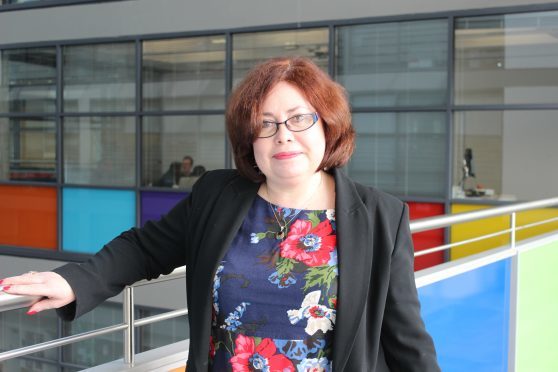Three out of five Twitter users in the UK tweet while watching television.
In the days before social media, chatting about the events unfolding on the screen in front of you was restricted to the people sitting on the same sofa, and perhaps some further discussion with people at work the next morning – so-called ‘water-cooler conversation’.
Now, however, we share opinions and criticisms of what we see in front of us with thousands of others online. Whether it is Strictly or Bake Off, we can join in a national conversation in real time.
Unlike television broadcasting or newspaper opinion columns, social media has low barriers to entry – if you have an internet connection and a Twitter handle you can join in the debate.
It is therefore no surprise to find that political televised events also generate debate and discussion on Twitter. Over the last few years, a team at RGU has analysed Twitter discussion of televised political debates during the Independence Referendum and the General Election in 2015.
Next week we will once again be collecting and analysing tweets during the two Scottish leaders’ debates.
Investigating Twitter comments about our political leaders and their lines of argument has been a fascinating process. We are able to identify particular moments when Twitter goes wild, and also subjects that seem to turn commentators off.
In 2015, for example, Nigel Farage’s policy of inflammatory statements led to his name dominating Twitter discussion, while during the Independence Referendum debates detailed discussion of economic issues saw a drop in Twitter traffic – possibly as viewers took a moment to put the kettle on?
One subject that attracted a lot of comments during the 2015 General Election debates was ‘the women’ – Nicola Sturgeon (SNP), Leanne Wood (Plaid Cymru) and Natalie Bennett (Greens).
Twitter was stimulated by the sight of three female party leaders, with words such as ‘civilising’, ‘transforming’ and ‘refreshing’ recurring in complimentary tweets.
As far as UK General Election debates were concerned, this was the first time that any women at all had participated – for the 2010 election even the moderators of the debates had been male – and so it is not surprising that the advent of three women leaders stimulated discussion.
However, not all in our sample saw the inclusion of the women in the debates positively, with at least one tweeter complaining that ‘three women agreeing with each other’ was not a debate.
On a more negative note, our research highlighted the use of Twitter during the debates to make personal attacks on politicians, including insults relating to their appearance, clothing and sexuality.
We also identified a clear gender divide, with a small minority of tweeters using sexual and sexually violent insults to attack female debaters – even sending these insults directly to the women by incorporating their twitter handle in the tweet.
Over the last year public attention has become more focused on attacks on women politicians via social media, and this is one of the issues we will be revisiting this week.
Theresa May and Jeremy Corbyn have refused to take part in any leaders’ debates.
In 2015 David Cameron also refused to take part in the second leaders’ debate. What was interesting was that he was still frequently discussed on Twitter during that debate.
We will be watching to see whether any of the UK leaders, such as Corbyn and May, are mentioned during the Scottish leaders’ debate – potentially taking the spotlight away from their Scottish counterparts.
Appearance in such debates, of course, means the raising of individual politicians’ profiles.
During one of the breaks during the first Independence Referendum debate between Alex Salmond and Alistair Darling in 2014 attention moved to the ‘spin room’ where Nicola Sturgeon and Kezia Dugdale discussed the ‘action so far’.
Several tweeters commented approvingly on this part of the programme, with one remarking presciently, ‘As Alistair Darling and Alex Salmond get their breath, STV is showing a preview of First Minister’s Questions 2016’.
On Sunday evening staff from RGU’s Schools of Cultural and Creative Business and Computing Science and Digital Media will once more turn their attention to Twitter and the television to see what – and who – the armchair commentators are discussing as the first Scottish leaders’ debate starts.
